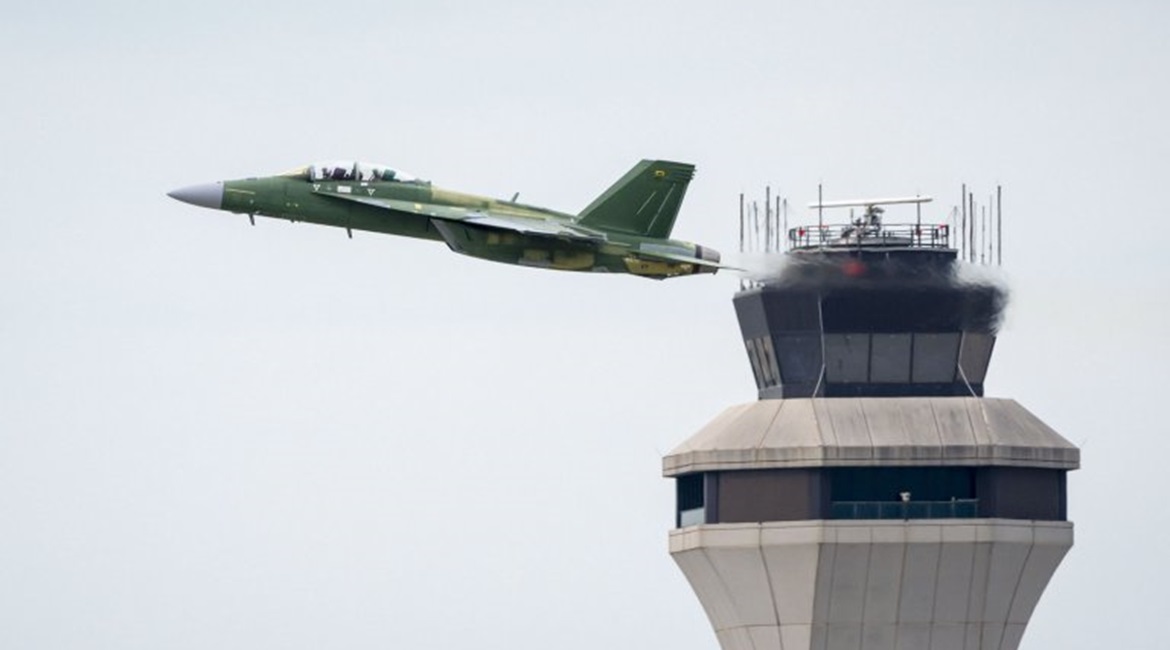
Boeing announced delivery of the first two F/A-18E/F Super Hornet Block 3 test aircraft to the US Navy (USN) on 17 June.

Boeing announced delivery of the first two Super Hornet Block 3 test aircraft to the US Navy on 17 June. (Boeing)
The milestone, which came some two weeks after the enhanced aircraft’s maiden flight on 4 June, saw a single-seat F/A-18E and a twin-seat F/A-18F delivered to the USN for carrier-suitability trials of the advanced computing and networking capabilities of the Block 3 platform, ahead of the anticipated arrival of the first operational Block 3 jets in 2021.
As previously reported, the Block 3 upgrade included five major changes, or Engineering Change Proposals (ECPs), to the Super Hornet.
These ECPs comprise a Service-Life Modification (SLM) process to extend the airframe life from 6,000 to 10,000 hours; the Advanced Cockpit System (ACS), which is built around an Elbit Systems 11 × 19 inch large-area display (LAD); the New Distributed Targeting Processor-Network (DTP-N) open-architecture multilevel-secure mission computer (which has about 17 times the computing power of the Block 2 aircraft); satellite communications (satcom) located on the aircraft spine for advanced network connectivity; and conformal fuel tanks (CFTs) giving an extra 3,500 lb (1,588 kg) of fuel (combined) from two tanks located in a low-drag configuration over the wing roots (the aircraft will be provisioned for the CFTs, with the navy deciding as and when it needs to fit them). In addition, the aircraft will receive the Block 2 Lockheed Martin AN/ASG-34 infrared search and track (IRST) long-range passive targeting pod, which is its own programme-of-record (PoR).
Looking to read the full article?
Gain unlimited access to Janes news and more...


